Smad4 deficiency in T cells leads to the Th17-associated development of premalignant gastroduodenal lesions in mice
- PMID: 21881210
- PMCID: PMC3195457
- DOI: 10.1172/JCI45114
Smad4 deficiency in T cells leads to the Th17-associated development of premalignant gastroduodenal lesions in mice
Abstract
While there is evidence that specific T cell populations can promote the growth of established tumors, instances where T cell activity causes neoplasms to arise de novo are infrequent. Here, we employed two conditional mutagenesis systems to delete the TGF-β signaling pathway component Smad4 in T cells and observed the spontaneous development of massive polyps within the gastroduodenal regions of mice. The epithelial lesions contained increased levels of transcripts encoding IL-11, IL-6, TGF-β, IL-1β, and TNF-α, and lamina propria cells isolated from lesions contained abundant IL-17A+CD4+ T cells. Furthermore, we found that Smad4 deficiency attenuated TGF-β-mediated in vitro polarization of FoxP3+CD4+ T cells, but not IL-17A+CD4+ T cells, suggesting that the epithelial lesions may have arisen as a consequence of unchecked Th17 cell activity. Proinflammatory cytokine production likely accounted for the raised levels of IL-11, a cytokine known to promote gastric epithelial cell survival and hyperplasia. Consistent with IL-11 having a pathogenic role in this model, we found evidence of Stat3 activation in the gastric polyps. Thus, our data indicate that a chronic increase in gut Th17 cell activity can be associated with the development of premalignant lesions of the gastroduodenal region.
Figures
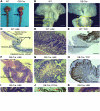

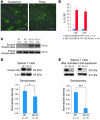
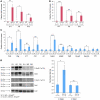
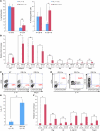
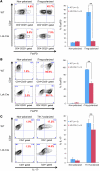

Similar articles
-
Induction of interleukin-10 in the T helper type 17 effector population by the G protein coupled estrogen receptor (GPER) agonist G-1.Immunology. 2011 Sep;134(1):93-106. doi: 10.1111/j.1365-2567.2011.03471.x. Epub 2011 Jul 2. Immunology. 2011. PMID: 21722102 Free PMC article.
-
Expression of IL-17F is associated with non-pathogenic Th17 cells.J Mol Med (Berl). 2018 Aug;96(8):819-829. doi: 10.1007/s00109-018-1662-5. Epub 2018 Jun 29. J Mol Med (Berl). 2018. PMID: 29959474
-
Smad4 in T cells plays a protective role in the development of autoimmune Sjögren's syndrome in the nonobese diabetic mouse.Oncotarget. 2016 Dec 6;7(49):80298-80312. doi: 10.18632/oncotarget.13437. Oncotarget. 2016. PMID: 27880731 Free PMC article.
-
Foxp3+ regulatory T cells, Th17 effector cells, and cytokine environment in inflammatory bowel disease.J Clin Immunol. 2010 Jan;30(1):80-9. doi: 10.1007/s10875-009-9345-1. J Clin Immunol. 2010. PMID: 19936899
-
Smad4 signalling in T cells is required for suppression of gastrointestinal cancer.Nature. 2006 Jun 22;441(7096):1015-9. doi: 10.1038/nature04846. Nature. 2006. PMID: 16791201
Cited by
-
Enzalutamide-induced and PTH1R-mediated TGFBR2 degradation in osteoblasts confers resistance in prostate cancer bone metastases.Cancer Lett. 2022 Jan 28;525:170-178. doi: 10.1016/j.canlet.2021.10.042. Epub 2021 Nov 6. Cancer Lett. 2022. PMID: 34752846 Free PMC article.
-
Chinese 1 strain of Toxoplasma gondii excreted-secreted antigens negatively modulate Foxp3 via inhibition of the TGFßRII/Smad2/Smad3/Smad4 pathway.J Cell Mol Med. 2017 Sep;21(9):1944-1953. doi: 10.1111/jcmm.13115. Epub 2017 Mar 16. J Cell Mol Med. 2017. PMID: 28300338 Free PMC article.
-
SMAD regulatory networks construct a balanced immune system.Immunology. 2013 May;139(1):1-10. doi: 10.1111/imm.12076. Immunology. 2013. PMID: 23347175 Free PMC article. Review.
-
Transforming Growth Factor-β Signaling in Immunity and Cancer.Immunity. 2019 Apr 16;50(4):924-940. doi: 10.1016/j.immuni.2019.03.024. Immunity. 2019. PMID: 30995507 Free PMC article. Review.
-
Intricacies of TGF-β signaling in Treg and Th17 cell biology.Cell Mol Immunol. 2023 Sep;20(9):1002-1022. doi: 10.1038/s41423-023-01036-7. Epub 2023 May 23. Cell Mol Immunol. 2023. PMID: 37217798 Free PMC article. Review.
References
Publication types
MeSH terms
Substances
Grants and funding
LinkOut - more resources
Full Text Sources
Molecular Biology Databases
Research Materials
Miscellaneous

